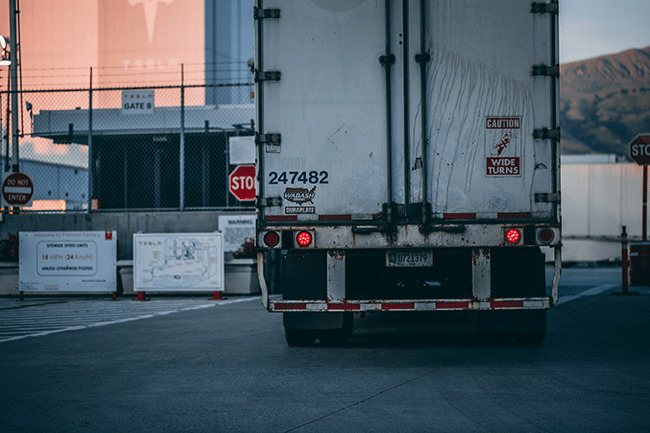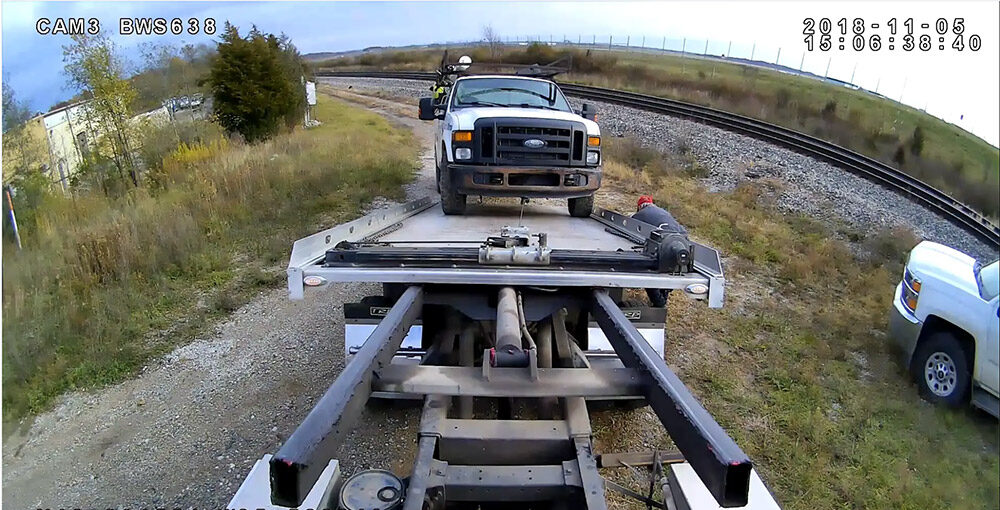Commercial Fleet Outlook 2021: Insurance Trends

As everyone looks to put 2020 in the rear-view mirror, 2021 is bringing its own set of challenges to fleet managers.
One challenge that won’t get any easier in 2021 is navigating all the disruption COVID-19 has brought onto the commercial transportation industry – on top of the ever-present issues the industry already faces each year. In addition to the stress these issues put on fleet managers, many of these issues also contribute to growing insurance costs.
With an eye on 2021, HUB International recently released its yearly outlook for the commercial transportation industry and highlighted four key takeaways and how those trends can impact insurance rates.
Last Mile Delivery
When COVID-19 first hit, the commercial transportation industry was no different from others as it had to shift on a dime to combat disruptions. As people began to quarantine and stores shut down, fleets went from delivering pallets of goods to businesses to delivering small orders directly to customers as online ecommerce predictably exploded – with Fleet Owner magazine reporting last-mile jobs helped to prop up transportation employment numbers in 2020.
But as deliveries moved to home addresses, HUB reports that last-mile delivery brings its own unique set of risks and liabilities that make negotiating insurance coverage more difficult.
Going from deliveries on predictable routes to locations fully outfitted to receive large deliveries to delivering to smaller locations and home addresses not set up to receive shipments brings increased liability risk. Add in other adjustments like the FMCSA Hours of Service regulations that expanded the driving time exception for adverse conditions, changed the short haul allowance and updated the sleeper berth provision, and you’re looking at a new set of potential insurance risks.
Because of all the increased risks associated with last-mile delivery, HUB recommends that commercial fleet managers work with their insurance providers to adjust their coverage to cover these additional risks. HUB also recommends that managers revisit negotiations with shippers to provide better protection against liabilities.
Proven Risk Management Solutions
No matter if it’s a once-in-a-lifetime pandemic or operating in more normal times, HUB states that while fleet managers need to be aware of new risk management processes, it’s important to maintain risk management practices that have been proven to keep safety scores high with insurance providers.
And as Automotive Fleet magazine reports that the average cost of loss related to a commercial fleet vehicle accident is $70,000 – almost twice the cost of an average workplace injury – fleet managers need to focus on maintaining the best risk management processes to avoid such devastating losses.
HUB states there are three specific areas that fleet managers need to focus on to keep those safety scores high and insurance rates low:
- Comprehensive hiring and onboarding processes: Developing a stellar training program and fully educating new drivers on best practices at your organization can go a long way to setting your drivers up for success and reducing potential risks due to poor training and onboarding.
- Improved vetting and monitoring of drivers: While issues like driver shortages and increased demand can lead to commercial fleet managers relaxing their hiring rules, it’s vital to fully vet your potential drivers and monitor their actions on the road (which we’ll touch on further down in this post) to ensure they’re driving safely. It may be tempting to get a driver behind the wheel as quickly as possible to meet demand, but cutting corners on the vetting process can cause more problems than its worth.
- Proactive training: In any industry, it’s always better to be proactive than reactive. That certainly applies to the commercial trucking industry given the extra liability risks that can be compounded by a lack of proactive training and the disruptions COVID-19 has brought. Make sure to develop comprehensive and continual training programs throughout each year to ensure your drivers and your organization are ahead of the curve. The last thing you want to do is wait until a costly accident to improve your training processes.
Invest in Technology
One of the biggest takeaways from HUB’s 2021 outlook is the call for increased investment in fleet technology as insurance carriers are starting to recognize how technology can be used to reduce liability and make fleets safer.
A piece of technology that has gained traction with commercial fleet managers has been fleet dash cameras and video recording systems. According to a report from Transport Topics, some insurance providers have started to give premium discounts for fleets with video systems installed, or even subsidize the cost of the video systems.
Even if your insurance provider doesn’t provide discounts for installing such video technology, you can still improve your rates by using video systems to provide evidence to exonerate your drivers from false accident claims. Transport Topics reports that expensive settlements in trucking litigation is a key factor in rising insurance costs for fleets. But If you have a video record to quickly disprove any false claims and eliminate costly settlements, your insurance rates can benefit in the long run.
On top of video systems, HUB also recommends pairing that technology with an all-in-one telematics platform so you can use the data captured by those systems to help reduce potential risks for your fleet. By being able to track as much data as possible regarding things like mileage, route optimization and accident trends, you can use that information to increase efficiency and limit risk with educated decisions based on actionable data.
For example, if you find that a certain driver constantly goes over your configured speed limit threshold and the video system marks it as an event each time that happens, you can use that data to proactively address the issue with your driver and make the necessary corrections.
If you didn’t have that data to work with, you could be in the dark knowing which drivers are liability risks and never take action to correct the issues. Otherwise, you could have a nasty surprise waiting for you when you find out that driver finally got in an accident due to their speeding – and your company is footing the bill for a large settlement and insurance rate hike because of it.
Driver Shortage Will Drive Change
As something that was alluded to earlier in this post, the last key takeaway from HUB’s report was how the continuing driver shortage is disrupting the industry and insurance rates.
According to a recent report from The Journal of Commerce, the FMSCA reported a loss of more than 150,000 truck drivers at carriers with up to 100 trucks from July to October in 2020. With COVID-19 compounding this issue on top of the aging driver population – HUB reports a quarter of drivers are 55 or older – fleet managers are struggling to put people behind the wheel.
That shortage can cause some fleet managers to take a chance on a questionable driver or rush new drivers through without fully vetting or training them. It may seem like a solution for the short term to get someone behind the wheel quickly, but that risk becomes real when that driver ends up causing an accident because they weren’t properly trained or vetted. And now you’re looking at an even harder time hiring quality drivers because your insurance rates are rising and cutting into your budget for hiring.
To help attract qualified candidates and get younger drivers in the fold, HUB reports that many fleet managers are looking to improve driver benefits and wellness initiatives to attract more drivers. Whether it be awarding drivers for safe driving habits or better compensation and benefits, fleet managers have to work harder to attract and retain quality drivers who can have a direct impact on a fleet’s insurance rates.
Turn to Pro-Vision for Your Fleet Technology Needs
Looking to get the best safety technology for your fleet vehicles? Take a moment to see how Pro-Vision commercial vehicle video systems and software can help you protect your fleet and keep insurance rates lower.
